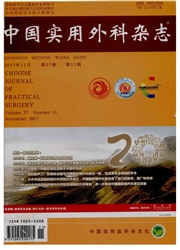

 中文摘要:
中文摘要:
肝胆管结石病具有高残留率和高复发率的特点。术前缺乏详细而全面的评估以及手术方式、手术时机选择不当是导致结石残留和复发的主要原因。数字化微创技术以三维重建、仿真手术和3D打印技术为核心,利用该技术术前对肝胆管结石病例进行临床分型诊断和个体化肝分段,进行充分手术风险评估和制定最佳手术方案,精准指导手术操作,最大程度去除结石和病灶,最大化保留残肝体积,有效降低结石残留率和复发率,缩短手术时间,降低手术并发症发生率,真正实现“去除病灶、取尽结石、解除梗阻、保留功能、通畅引流”以及“残肝体积最大化”的微创策略。数字化微创技术已经成为肝胆管结石治疗行之有效的手段,有望进一步提高肝胆管结石的外科治疗水平。
 英文摘要:
英文摘要:
Hepatolithiasis is an intractable disease characterized by high residual and recurrent incidence after hepatectomy. Insufficient cbmprehensive preoperative evaluation, inappropriate treatment selection and inopportune operation timing were tightly responsible for the negative outcomes. Based on digital minimally invasive technology, which mainly consist of three-dimensional reconstruction, surgery simulation, and 3D printing technique, systematic preoperative assessment and optimized scheme could by obtained though systematic preoperative risk evaluation and optimized scheme on 3D classification and individualized segmentation. Consequently, the operation could be conducted accurately. Thus, the incidence of recurrence and possibility of stone residual, as well as postoperative complications and the duration could be minimized extremely. In conclusion, digital minimally invasive technology is conducive to achieve the therapeutic goal of hepatolithiasis-complete clearance of stones, elimination of strictures, removal of lesions and adequate drainage of the affected segments of the biliary tree and is helpful to improve the diagnosis and treatment in hepatolithiasis.
 同期刊论文项目
同期刊论文项目
 同项目期刊论文
同项目期刊论文
 期刊信息
期刊信息
